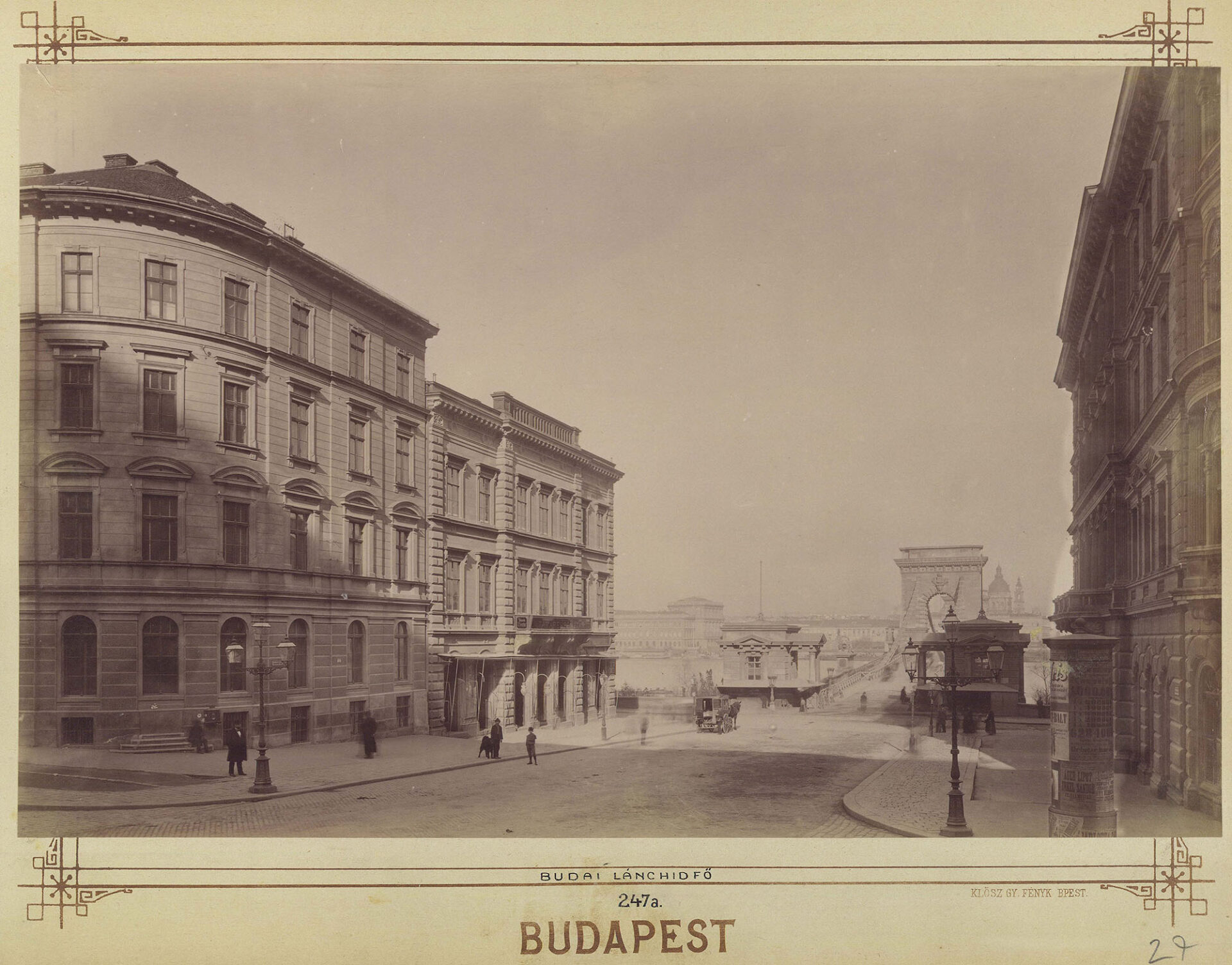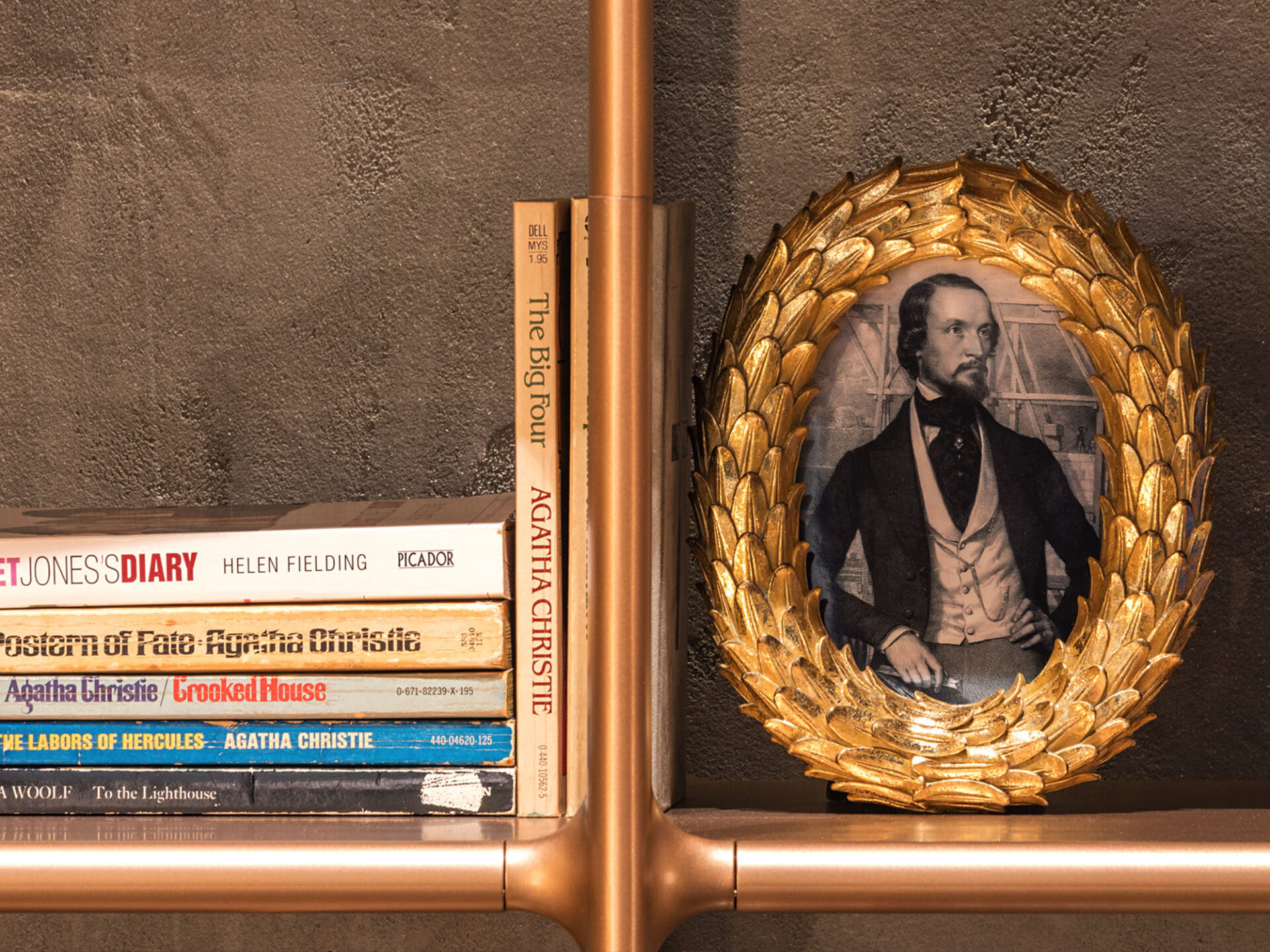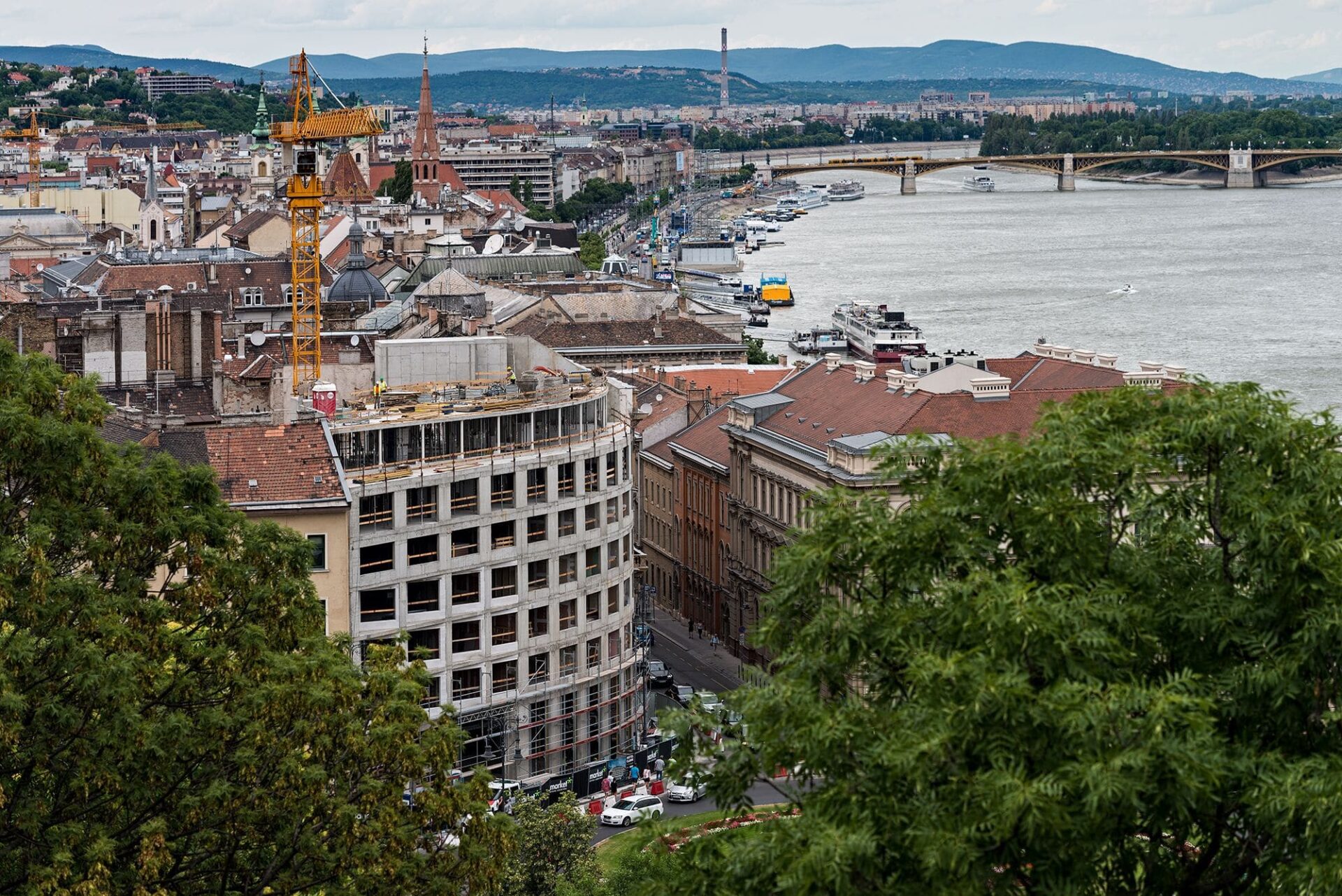From the past to the present
Architectural and cultural heritage
During the 19th century Pest-Buda became an exciting cosmopolitan city thanks to many large-scale developments and constructions. The impressive stone bridge, named 50 years later as the Széchenyi Chain Bridge, was approved in 1849, 8 years later, in 1857, followed by the 350-meter-long Castle Hill tunnel, which connected the Buda side of the Chain Bridge to the town of Krisztina. In 1860, the cornerstone of the Buda Savings Bank was laid in the popular and frequented square, which was then called the “Buda Chain Bridge Square”.
The lavish, two-storey, Neo-Renaissance headquarters and the tenement house built of carved ash stone were designed by the star architect of this age, Miklós Ybl. A red marble staircase led from the Tuscan-style foyer, which was handed over in 1862. The inner courtyard was adorned on all three levels by a bright and slender row of colonnades reminiscent of the palaces of the cinquecento of Genoa. The elegant Lánchíd Café opened in 1864 on the east side of the building, facing Lánchíd Square, which from the beginning became a popular meeting place for local dignitaries, castle officials, military officers, Buda citizens and intellectuals. In the early 1930s, the editorial staff of the literary magazine “West” and the legendary artists of the era often met here. (Mihály Babits, Zsigmond Móricz, Milán Füst, Dezső Kosztolányi, Frigyes Karinthy, Gyula Krúdy, etc.). During the battles of the Second World War, the building of the Buda Savings Bank was destroyed, which was not rebuilt afterwards.
Under the ground-floor arcade of the partially preserved north wing, Budapest’s very first ruin pub, the Chain Bridge Espresso, operated until 1990, when it was finally demolished.


Architectural and cultural heritage
During the 19th century Pest-Buda became an exciting cosmopolitan city thanks to many large-scale developments and constructions. The impressive stone bridge, named 50 years later as the Széchenyi Chain Bridge, was approved in 1849, 8 years later, in 1857, followed by the 350-meter-long Castle Hill tunnel, which connected the Buda side of the Chain Bridge to the town of Krisztina. In 1860, the cornerstone of the Buda Savings Bank was laid in the popular and frequented square, which was then called the “Buda Chain Bridge Square”.
The lavish, two-storey, Neo-Renaissance headquarters and the tenement house built of carved ash stone were designed by the star architect of this age, Miklós Ybl. A red marble staircase led from the Tuscan-style foyer, which was handed over in 1862. The inner courtyard was adorned on all three levels by a bright and slender row of colonnades reminiscent of the palaces of the cinquecento of Genoa. The elegant Lánchíd Café opened in 1864 on the east side of the building, facing Lánchíd Square, which from the beginning became a popular meeting place for local dignitaries, castle officials, military officers, Buda citizens and intellectuals. In the early 1930s, the editorial staff of the literary magazine “West” and the legendary artists of the era often met here. (Mihály Babits, Zsigmond Móricz, Milán Füst, Dezső Kosztolányi, Frigyes Karinthy, Gyula Krúdy, etc.). During the battles of the Second World War, the building of the Buda Savings Bank was destroyed, which was not rebuilt afterwards.
Under the ground-floor arcade of the partially preserved north wing, Budapest’s very first ruin pub, the Chain Bridge Espresso, operated until 1990, when it was finally demolished.

Adam Clark – The father of the square
Hungary’s first Neo-Renaissance square, Chain Bridge Square, was named after Adam Clark in 1912, in honor of the Scottish engineer who played a key role in the construction of Chain Bridge. The young professional who came to Hungary in 1834 won great recognition among the Hungarian public and the profession alike. After the commissioning of the “Otter” machine ordered from abroad to regulate the Danube, he was invited to supervise the construction of the Széchenyi Chain Bridge, designed by the English engineer William Tierney Clark, which later became a symbol of the city.
Count Széchényi also entrusted him with the management of the construction of the Tunnel, which was handed over in 1857.
Thanks to the Scottish engineer, who was connected to Hungary in several respects, the Chain Bridge was saved during the War of Independence in ’48. Clark flooded parts of the structure with water, rendering the pumps unusable, so gunpowder barrels could only be blown up on the surface of the bridge, causing minor damage to the metal structure.
The importance of Clark Ádám Square is indicated by the fact that after the War of Independence in 1848 -49, the “0” milestone was moved here from the Buda Castle, symbolizing the starting point of all the main roads originating from Budapest. The original artwork was destroyed, but over time, different sculptural forms marked the country’s center point.
Hotel Clark – A unique construction
The ideas and plans for the rebirth of the corner site of only 677 sqm, which is considered one of the most expensive plots in Budapest – was an empty plot since 1990 – have concerned architects and the general public for several decades. In 2008, after an international design competition announced by more than fifty architectural firms the future of this site came to a standstill for years as it resulted no winners.
Finally, the special hotel concept of the Australian-born Anthony Gall, Ybl-award winning architect, who is connected to Hungary with a thousand threads, came true.
In 2016, the construction of an elegant and extravagant 86-room boutique hotel could begin, which opened its gate in April 2018, honoring to the unique ideas and work of the interior designer Ákos Bara.
Did you know that?
- The hotel was built in 736 days,
- Total surface of the 11-storey building is 7500 sqm (8 floors, ground floor, three underground levels),
- the total weight of the concrete facade is 495,000 kg,
- there are a total of 1650 lion heads in the building,
- total surface area of the individual lion-head wallpapers: 660 nm?


Hotel Clark – A unique construction
The ideas and plans for the rebirth of the corner site of only 677 sqm, which is considered one of the most expensive plots in Budapest – was an empty plot since 1990 – have concerned architects and the general public for several decades. In 2008, after an international design competition announced by more than fifty architectural firms the future of this site came to a standstill for years as it resulted no winners.
Finally, the special hotel concept of the Australian-born Anthony Gall, Ybl-award winning architect, who is connected to Hungary with a thousand threads, came true.
In 2016, the construction of an elegant and extravagant 86-room boutique hotel could begin, which opened its gate in April 2018, honoring to the unique ideas and work of the interior designer Ákos Bara.
Did you know that?
- The hotel was built in 736 days,
- Total surface of the 11-storey building is 7500 sqm (8 floors, ground floor, three underground levels),
- the total weight of the concrete facade is 495,000 kg,
- there are a total of 1650 lion heads in the building,
- total surface area of the individual lion-head wallpapers: 660 nm?








